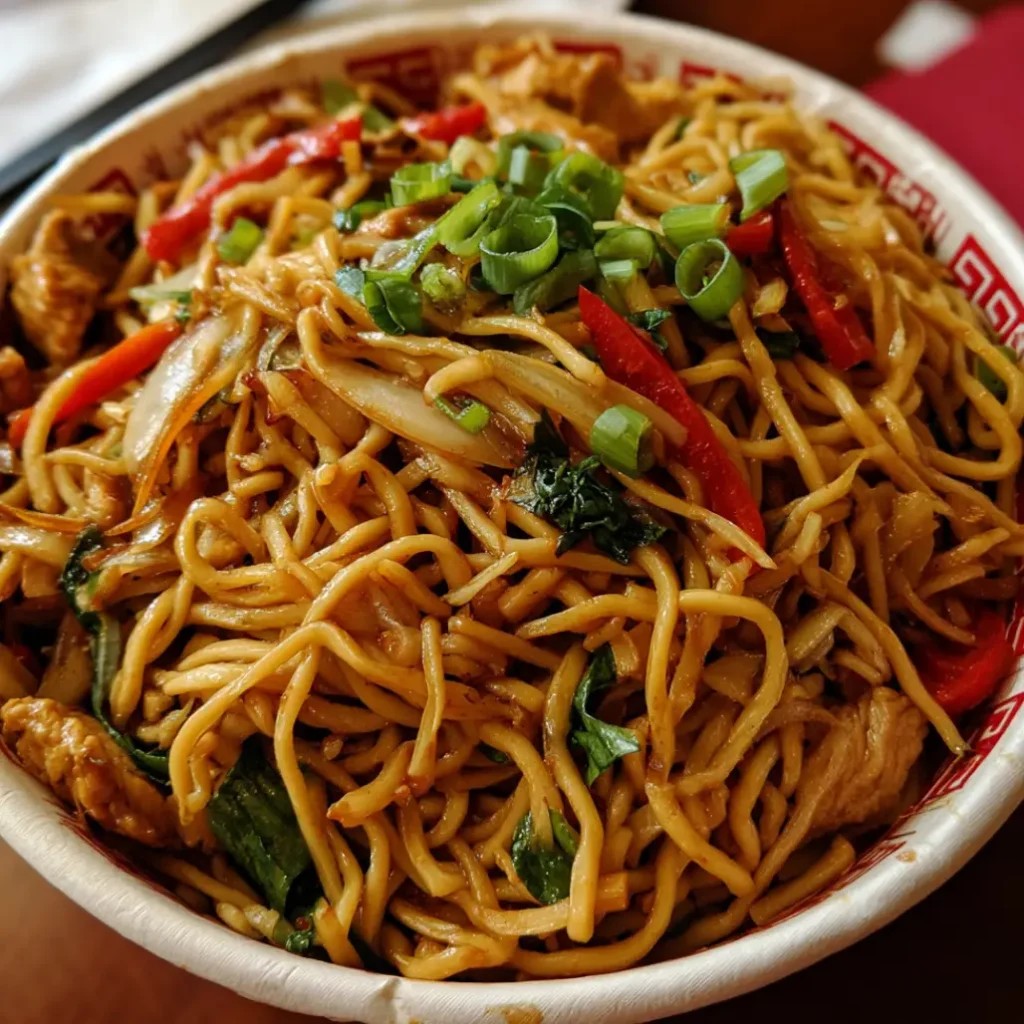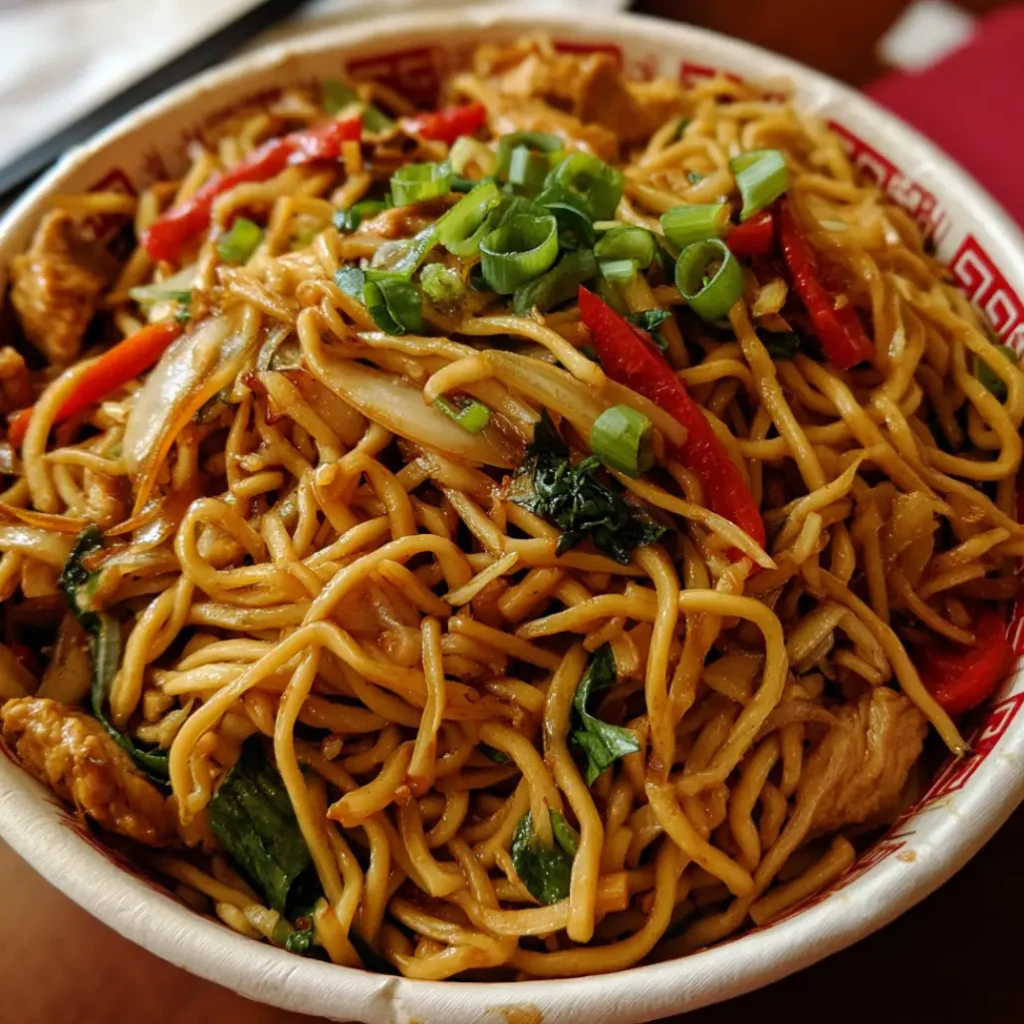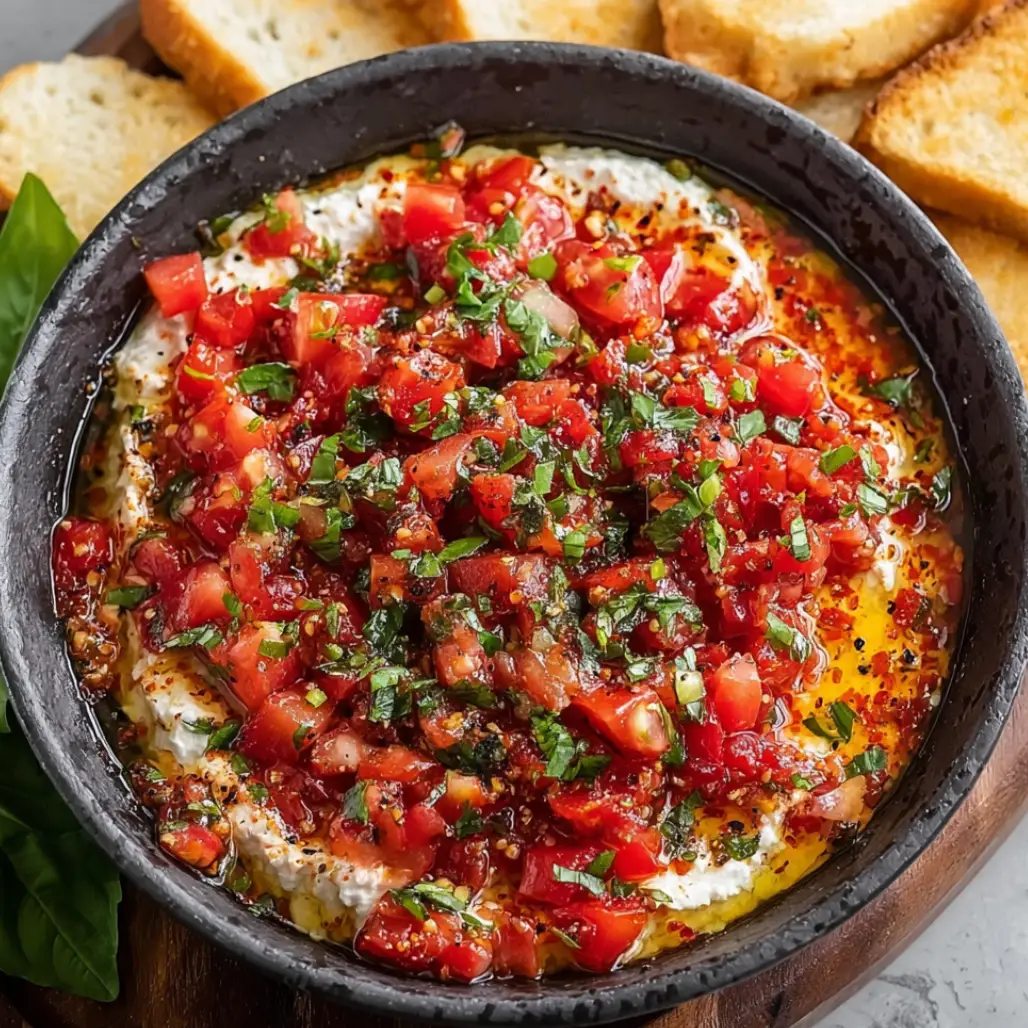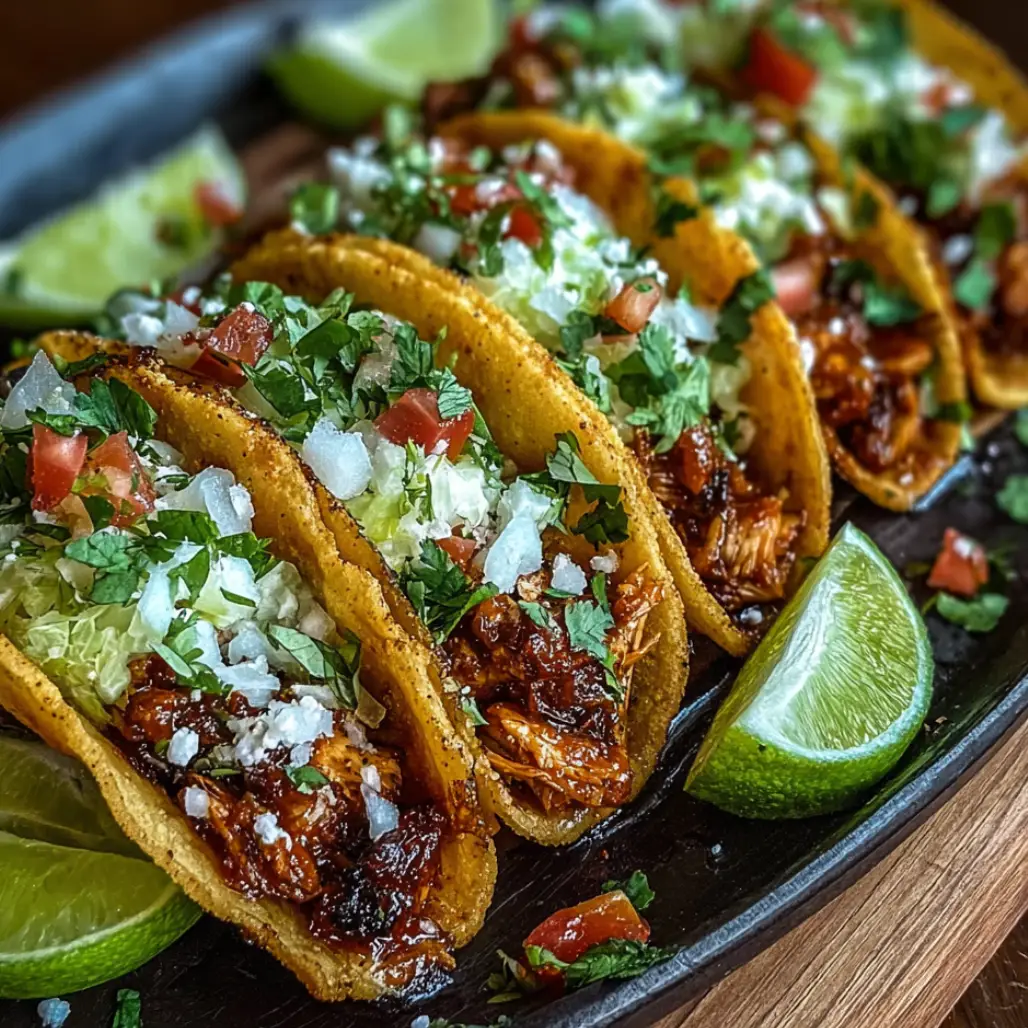| Prep Time: | 10 minutes |
|---|---|
| Cook Time: | 15 minutes |
| Total Time: | 25 minutes |
| Serves: | 4 |
Picture recreating that beloved easy Panda Express chow mein right in your own kitchen, because this remarkable copycat recipe delivers all the savory, slightly sweet flavors you crave without the mall food court trip or takeout expense. This authentic easy Panda Express chow mein captures the essence of tender yakisoba noodles tossed with crisp vegetables and coated in a glossy sauce that perfectly balances soy sauce richness with subtle sweetness, because it uses the same fundamental techniques and ingredients that create that distinctive taste you remember from countless orange tray meals.
Why Easy Panda Express Chow Mein Works So Perfectly
This incredible easy Panda Express chow mein succeeds because it focuses on simplicity and proper technique rather than complicated ingredient lists or fancy cooking methods. The magic lies in achieving the perfect balance between tender noodles and crisp vegetables because proper timing ensures each component retains its ideal texture while absorbing the flavorful sauce that ties everything together harmoniously.
The genius of this easy Panda Express chow mein lies in its accessibility because it uses ingredients readily available at most grocery stores, making it possible to satisfy your craving whenever it strikes. The yakisoba noodles provide the authentic chewy texture because these wheat-based noodles mirror exactly what Panda Express uses, while the sauce combination creates that distinctive glossy coating that makes each bite irresistibly satisfying.
This easy Panda Express chow mein proves that restaurant-quality results don’t require professional equipment or years of training because the technique relies on high heat, quick cooking, and proper ingredient preparation that any home cook can master with confidence and consistent success.
Essential Ingredients for Perfect Easy Panda Express Chow Mein
For the Noodle Base:
- 3 packages (5.6 oz each) yakisoba noodles, seasoning packets discarded
- Water for boiling noodles
- 1 tablespoon vegetable oil for tossing
For the Vegetable Medley:
- 1 large yellow onion, thinly sliced
- 2 cups green cabbage, thinly sliced
- 2 stalks celery, cut diagonally into thin pieces
- 3 cloves fresh garlic, minced
- 1 teaspoon fresh ginger, minced
For the Signature Sauce:
- 3 tablespoons low-sodium soy sauce
- 2 tablespoons oyster sauce
- 1 tablespoon brown sugar
- 1/2 teaspoon white pepper
- 1 teaspoon sesame oil
- 2 tablespoons vegetable oil for stir-frying
The Art of Creating Easy Panda Express Chow Mein
Mastering this exceptional easy Panda Express chow mein requires understanding the fundamental principles of wok cooking because successful execution depends on high heat, quick movements, and precise timing that creates the characteristic textures and flavors. The vegetable preparation proves crucial because uniform slicing ensures even cooking, while the sauce preparation must happen before cooking begins because the stir-frying process moves too quickly for mid-cooking adjustments.
The noodle handling technique makes the difference between authentic results and disappointing substitutes because proper cooking and draining creates the ideal surface for sauce adhesion. The stir-frying method requires confidence and speed because hesitation leads to uneven cooking, while bold, decisive movements create the slight char and smoky flavors that distinguish restaurant-quality easy Panda Express chow mein from home attempts.
Temperature control throughout the process ensures optimal results because the high heat creates the signature “wok hei” or breath of the wok that gives authentic Chinese stir-fries their distinctive taste and aroma that cannot be replicated through low-heat cooking methods.
Step-by-Step Instructions for Easy Panda Express Chow Mein
Step 1: Prepare the Noodle Foundation
Bring a large pot of water to a rolling boil and cook the yakisoba noodles for exactly 2-3 minutes until they separate and become tender but still slightly firm because overcooking creates mushy texture that won’t hold up during stir-frying. Drain immediately and rinse with cold water because this stops the cooking process and removes excess starch.
Professional Tip: Toss the drained noodles with a small amount of oil because this prevents sticking and creates better texture during the final cooking phase.
Key Points: Under-cook the noodles slightly because they will continue cooking when combined with the hot vegetables and sauce, achieving perfect doneness without becoming mushy.
Step 2: Create the Flavor Base
Combine soy sauce, oyster sauce, brown sugar, white pepper, and sesame oil in a small bowl, whisking until the sugar dissolves completely because undissolved sugar creates uneven sweetness and can burn during cooking. Set this sauce mixture aside within easy reach because stir-frying happens quickly and you won’t have time to prepare ingredients once cooking begins.
Professional Tip: Taste the sauce mixture and adjust seasonings because the final dish will have a slightly more diluted flavor when combined with noodles and vegetables.
Key Points: Prepare all sauce ingredients in advance because successful stir-frying requires having everything ready before turning on the heat, as the cooking process moves too rapidly for preparation pauses.
Step 3: Prepare the Vegetable Components
Heat a large wok or skillet over high heat until it begins to smoke slightly because this intense heat creates the characteristic searing that develops complex flavors in the vegetables. Add vegetable oil and swirl to coat the surface because proper oil distribution prevents sticking while promoting even browning.
Professional Tip: Work in batches if your pan seems crowded because overcrowding creates steam instead of the desired searing effect that gives easy Panda Express chow mein its authentic taste.
Key Points: Maintain high heat throughout the vegetable cooking process because lower temperatures create soggy vegetables instead of the crisp-tender texture that characterizes restaurant-quality chow mein.
Step 4: Execute the Stir-Frying Technique
Add minced garlic and ginger to the hot oil, stirring constantly for 30 seconds because these aromatics burn easily but provide essential flavor foundation when cooked properly. Immediately add sliced onions and cook for 1-2 minutes until they begin to soften and develop slight browning because this caramelization adds depth to the overall flavor profile.
Professional Tip: Keep ingredients moving constantly because stationary food burns quickly at these high temperatures, while continuous motion ensures even cooking and prevents bitter flavors.
Key Points: Watch for visual cues like slight charring on vegetables because these indicators show proper heat level and cooking progress better than rigid timing in high-heat cooking.
Step 5: Combine All Components
Add cabbage and celery to the wok, stir-frying for 2-3 minutes until vegetables are crisp-tender and slightly charred because this texture contrast creates the signature mouthfeel of authentic easy Panda Express chow mein. Pour the prepared sauce over the vegetables and toss quickly because immediate distribution prevents burning while ensuring even coating.
Professional Tip: Add the cooked noodles immediately after the sauce because the hot vegetables and sauce will warm the noodles while the sauce coats everything evenly.
Key Points: Work quickly but deliberately during this final combining phase because the goal is to heat everything through while maintaining distinct textures and preventing overcooking of any component.
Step 6: Final Assembly and Serving
Toss everything together for 1-2 minutes until the noodles are heated through and evenly coated with sauce because proper distribution ensures every bite contains the perfect balance of flavors and textures. Remove from heat immediately because residual heat will continue cooking while you prepare for serving.
Professional Tip: Taste and adjust seasonings at this final stage because you can add a splash more soy sauce or a pinch of sugar to achieve your preferred flavor balance.
Key Points: Serve immediately while hot because easy Panda Express chow mein tastes best when the textures are at their peak and the sauce hasn’t had time to be absorbed completely by the noodles.
Professional Tips for Perfect Easy Panda Express Chow Mein
Ingredient quality significantly impacts final results because fresh vegetables create better texture and flavor than older produce, while authentic yakisoba noodles provide the exact chewy consistency that makes this easy Panda Express chow mein taste restaurant-authentic. Invest in good oyster sauce because this ingredient provides much of the umami depth that distinguishes exceptional chow mein from mediocre versions.
Preparation organization proves absolutely essential because stir-frying happens so quickly that having everything measured, chopped, and ready prevents overcooking Categoriesor burning while you search for ingredients. Set up your cooking station with all components within arm’s reach because efficient movement during cooking creates better results than perfect technique hampered by poor organization.
Heat management requires confidence because many home cooks use insufficient heat, creating steamed rather than stir-fried results. Trust your equipment and maintain high heat throughout because proper searing creates the complex flavors that make this easy Panda Express chow mein taste authentically restaurant-prepared rather than merely homemade.
Creative Variations for Easy Panda Express Chow Mein
Transform this basic easy Panda Express chow mein into exciting alternatives because the fundamental technique accommodates countless ingredient substitutions while maintaining the essential character. Add protein like diced chicken, shrimp, or tofu because these additions create more substantial meals while working perfectly with the existing flavor profile and cooking method.
Experiment with different vegetables because snow peas, carrots, mushrooms, or bean sprouts provide variety and nutrition while complementing the traditional cabbage and celery combination. Consider different noodle alternatives because lo mein noodles, rice noodles, or even spaghetti can substitute for yakisoba when availability is limited, though texture will vary slightly.
Sauce modifications accommodate different taste preferences because adding chili garlic sauce creates heat, while increasing brown sugar develops sweetness, and extra sesame oil enhances nuttiness without compromising the fundamental easy Panda Express chow mein character that makes this dish so beloved.
Perfect Pairing Ideas for Easy Panda Express Chow Mein
This satisfying easy Panda Express chow mein pairs beautifully with complementary dishes that enhance rather than compete with its savory-sweet flavor profile because thoughtful menu planning creates more enjoyable dining experiences. Consider fresh salads from https://tastymiddles.com/category/salads/ because crisp greens and acidic dressings provide refreshing contrast to the rich, saucy noodles.
Begin your meal with light appetizers from https://tastymiddles.com/category/snacks-appetizers/ because simple preparations allow the chow mein to remain the centerpiece while providing textural variety and visual interest. Complete the Asian theme with appropriate sides from https://tastymiddles.com/category/perfect-sides/ because complementary vegetables and starches create cohesive, restaurant-style presentations.
Beverage selections should cleanse and refresh because the slightly oily, savory nature of this easy Panda Express chow mein benefits from drinks that cut through richness. Green tea, light beers, or sparkling water provide perfect accompaniments because their clean finish prepares your palate for each subsequent bite of these flavorful noodles.
Discover More Asian-Inspired Cooking
Expand your Asian cooking repertoire with complementary recipes that share similar techniques and flavor profiles because building related skills enhances your confidence and creates more cohesive meal planning opportunities. Explore savory sides at https://solushrecipes.com/category/savory-sides/ because properly prepared vegetables using Asian techniques complement noodle dishes perfectly while providing nutritional balance.
Enhance your culinary arsenal with marinades from https://solushrecipes.com/category/flavored-dips-marinades/ because these versatile preparations can transform simple proteins into complex dishes that pair beautifully with your homemade easy Panda Express chow mein. Consider refreshing beverages from https://solushrecipes.com/category/refreshing-beverages/ because Asian-inspired drinks balance rich, savory foods while enhancing the overall dining experience.
Complete your menu development with breakfast favorites from https://solushrecipes.com/category/breakfast-favorites/ because incorporating Asian flavors into morning meals creates interesting culinary themes that showcase your developing skills and adventurous approach to home cooking.
Storage Guidelines for Easy Panda Express Chow Mein
Proper storage techniques preserve both flavor and texture because leftover easy Panda Express chow mein can provide delicious quick meals for up to four days when handled correctly. Cool completely before refrigerating because hot food raises refrigerator temperature while creating condensation that affects texture and food safety standards.
Store in airtight containers to prevent moisture loss and odor absorption because exposure to air causes noodles to dry out while picking up unwanted refrigerator flavors that compromise the dish’s integrity. This easy Panda Express chow mein actually develops deeper flavors during storage because the sauce continues to penetrate the noodles and vegetables over time.
Reheat gently in a skillet with a splash of water or broth because this method restores the original texture better than microwave heating, which can create rubbery noodles and uneven heating. Add a small amount of fresh vegetables during reheating because this refreshes the dish while providing improved nutritional value and textural interest.
The Science Behind Perfect Easy Panda Express Chow Mein
Understanding the cooking science improves results because knowledge of heat transfer, protein coagulation, and starch gelatinization helps predict outcomes and troubleshoot problems before they occur. The high-heat stir-frying creates Maillard reactions because these chemical changes develop complex flavors and appealing colors that distinguish restaurant-quality easy Panda Express chow mein from pale imitations.
Proper noodle cooking involves controlled starch release because yakisoba noodles contain wheat proteins that require specific temperature and timing to achieve optimal texture. The sauce emulsification occurs when oil-based and water-based ingredients combine through vigorous stirring because this mechanical action creates smooth, glossy coatings that adhere evenly to noodle surfaces.
Vegetable cooking relies on cell wall breakdown because high heat ruptures plant structures just enough to create tenderness while maintaining crispness, explaining why temperature control proves so critical to achieving authentic easy Panda Express chow mein texture and mouthfeel.
Troubleshooting Common Easy Panda Express Chow Mein Issues
Mushy noodles result from overcooking or insufficient draining because excess water continues cooking the starches while diluting the sauce flavors. Cook noodles until barely tender and drain thoroughly because they will finish cooking when combined with hot vegetables and sauce during the final mixing phase.
Soggy vegetables indicate insufficient heat or overcrowding because these conditions create steam instead of the desired searing effect that maintains texture. Use the highest heat your stove provides and cook in batches if necessary because proper browning requires adequate space and intense heat to achieve restaurant-quality results.
Bland flavors often stem from inadequate sauce preparation or insufficient seasoning because the neutral noodles and vegetables depend entirely on the sauce for flavor development. Taste and adjust the sauce before adding to vegetables because correcting seasoning becomes much more difficult after combining all components in the hot pan.
Additional Asian Recipe Inspirations
Continue your culinary exploration with dessert options from https://tastymiddles.com/category/dessert-recipes/ because Asian-inspired sweets provide perfect conclusions to savory meals like this easy Panda Express chow mein. Consider light, fruit-based preparations or subtle flavors because these choices complement rather than compete with the rich main dish while maintaining thematic consistency.
Build confidence with similar stir-fry techniques because mastering high-heat cooking principles enables countless variations that accommodate seasonal ingredients and personal preferences. Asian cooking emphasizes balance and harmony because these principles create satisfying meals that nourish both body and spirit through thoughtful ingredient combinations and proper cooking techniques.
Remember that skill development requires practice because each attempt at making this easy Panda Express chow mein provides valuable learning experiences that enhance your understanding of timing, heat control, and flavor development that make home cooking truly rewarding and personally fulfilling.
Conclusion
This exceptional easy Panda Express chow mein recipe represents the perfect fusion of accessibility and authenticity because it transforms readily available ingredients into a restaurant-quality dish that satisfies both nostalgia and sophisticated palates. The combination of tender noodles, crisp vegetables, and savory-sweet sauce creates a harmony that delivers comfort food satisfaction while showcasing fundamental Asian cooking techniques that elevate simple ingredients into something extraordinary.
Whether recreating childhood food court memories or seeking an economical yet delicious weeknight meal, this easy Panda Express chow mein provides impressive results because it requires minimal specialized ingredients while delivering maximum flavor complexity and visual appeal. The recipe’s adaptability allows for endless customization because ingredient substitutions and additions accommodate dietary preferences and seasonal availability without compromising the essential characteristics that make this dish truly memorable and absolutely irresistible for families and food enthusiasts alike.









